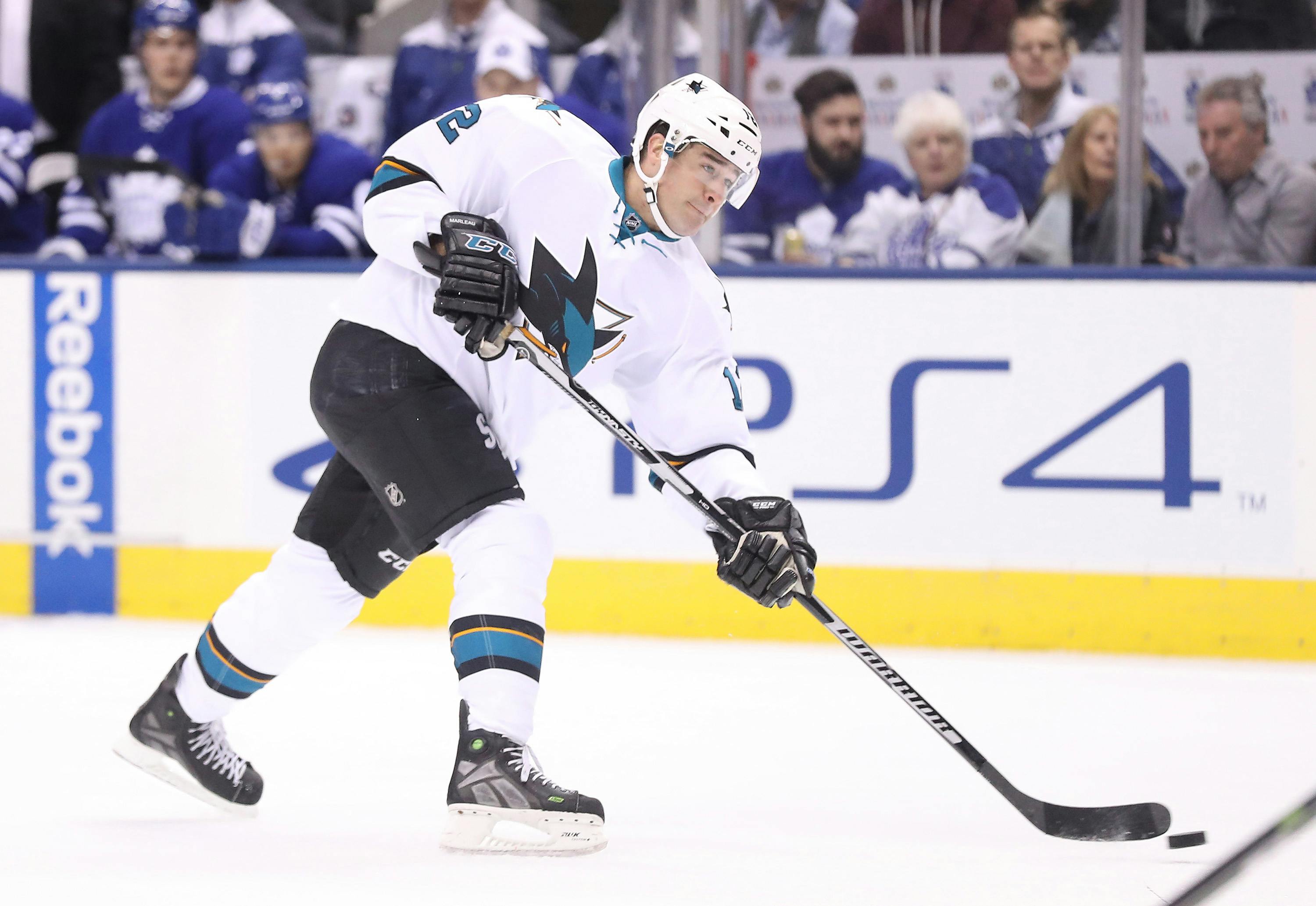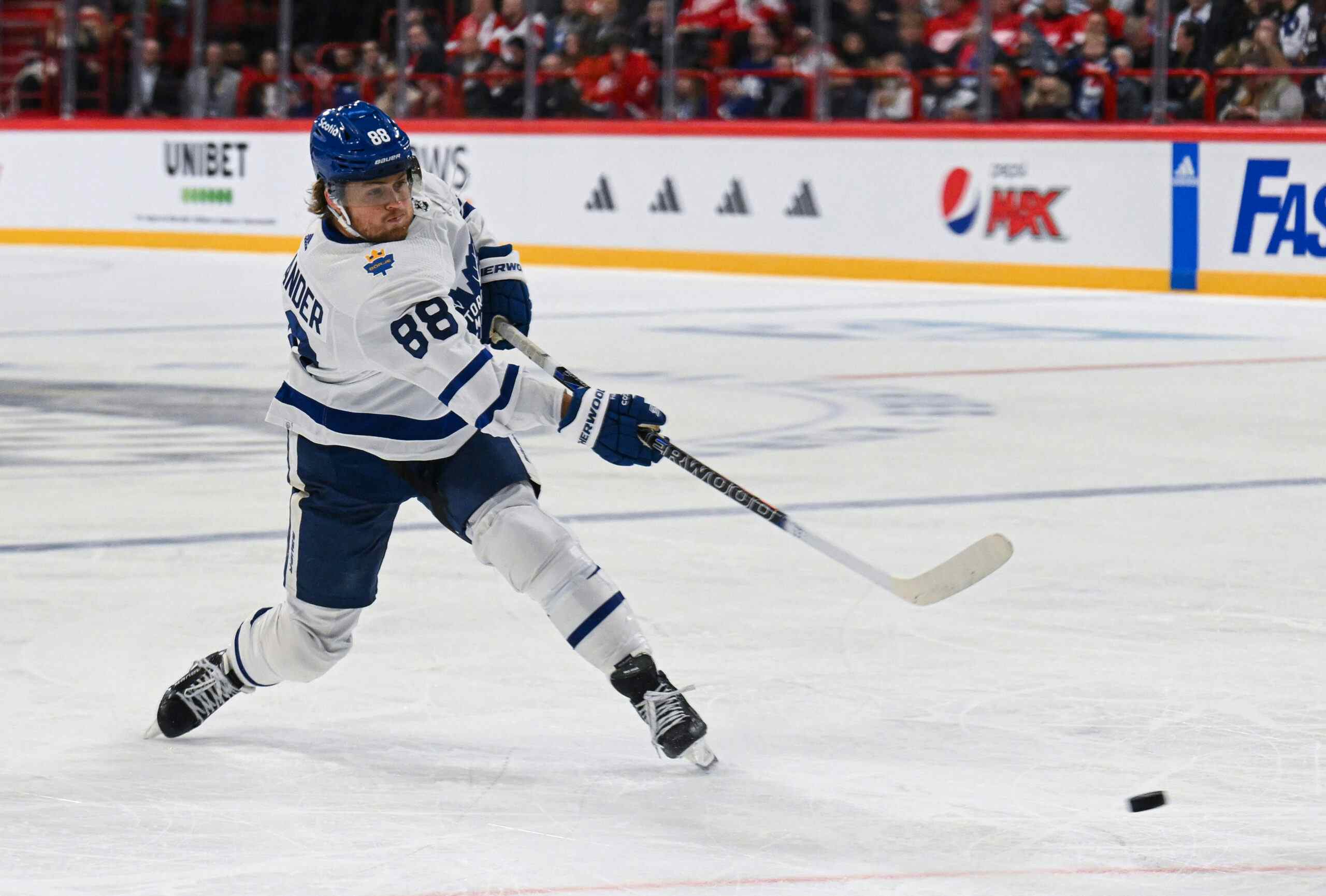Why the Patrick Marleau signing makes sense for the Maple Leafs

As you’ve probably already seen, Patrick Marleau is a Toronto Maple Leaf. Yeah, we’re still getting used to the thought too; even if “swing for the fences while you can” was the goal, there’s still a difference between dreaming and doing, and while they didn’t get both the guys they wanted (maybe next year, Joe Thornton), the Leafs walked away with yet another Top 6 winger to put into an already loaded lineup.
Of course, there’s a bit of understandable debate about the $18.75 million, three-year contract that he signed, given that he’s 37 years old and that Toronto have a trio of superstar kids to sign to deals over the next two summers. But here’s why I’m not against it.
History of Durability
One of the biggest concerns when looking at signing a big-time free agent is how healthy they’ll be moving forward. That’s the case at all ages; just ask people who were firmly on the “tread with caution” side of the Steven Stamkos debates last year, who admittedly might come out with the last laugh when all is said and done. Or, alternatively, ask the people who are sweating buckets now thanks to war flashbacks involving Stephane Robidas’ three-year contract with the Leafs which just ended fewer than two days ago.
What made the Robidas contract such a red flag, though, was the fact that the injury that sent him to “the island” was a pre-existing one; he effectively shattered his leg the season prior and played just 38 games.
Just for reference, Patrick Marleau hasn’t missed a game since April 9th, 2009. In that span, he’s played 624 regular season games, 91 playoff games, and 13 games in the Olympics (coming back with two gold medals, no less). That’s 728 games on his schedule without interruption and without hassle. Knowing that the Sharks haven’t particularly overworked him in those games, and being aware his relatively clean style of play, that involves a willingness but not an eagerness to hit opponents or block shots, it’s probably a good bet to assume that he’s still got as due for a sharp, sudden deterioration. The risk is there, and a 35+ contract gives a bit more of a consequence to it, but Marleau isn’t your typical worn-out journeyman. He’s a skilled Ironman who’s played 1670 of a possible 1682 regular season and playoff games in his career. I wouldn’t consider him any more a risk to go down with an injury than the mid-20’s contingent of the team.
History of Success
As a reminder, Patrick Marleau is really, really good. We’re talking about a player that’s got over 500 career goals, nearly 1100 points, won two Olympic golds and two World Championship golds, been to three all-star games, has gotten Hart Trophy votes in five seasons, has gotten Selke votes in four, and really only saw his “star” reputation fade because the Sharks built themselves a top-to-bottom team in the mid-late 2000’s that was able to spread the love.
Even at 37, he’s still hanging with the rest of the league. His 1.47 even strength points per hour with San Jose was 6th highest amongst regular Sharks forwards and would’ve ranked 7th amongst Leafs, though it’s worth noting that 1st on San Jose (Logan Couture at 2.01) would’ve been 6th for Toronto.
One thing that’s particularly impressive, and maybe gives some reason to feel a little more confident in the term, is the company he keeps as far as his ability to score at his age. In the salary cap era, only five other players were able to score multiple 25+ goal seasons after the Age of 35: Jarome Iginla, Joe Sakic, Teemu Selanne, Martin St. Louis, and, interestingly, Brendan Shanahan.
Most of these players kept scoring until the end, though Shanahan fell off a cliff in his Age 40 season, Selanne eventually started to slide around 42, and Sakic effectively ended his own career with an off-ice freak accident despite continuing to score at a point-per-game pace at 39. Iginla’s nosedive this season may give people some pause, though the fact that he started scoring at his previous year’s rate once he left 30th-place Colorado buys him some doubt benefit, not to mention that a physical player like him would be more likely to deteriorate suddenly.
Generally speaking, while we shouldn’t be expecting Marleau to go back to his prime and start potting 35 goals a year again, it takes an elite player to stay good through to his current age and those guys tend to decline a little more gradually and leave the game on their own terms.
Multi-Layered Mentorship
We at TLN have been pretty dismissive of the idea of acquiring a player simply for their off-ice abilities. Mentorship, intangibles, whatever you want to call it, you ideally want it attached to a player who is also going to help you on the ice; the icing on the cake, rather than the cake made of icing.
Metaphorically speaking, Marleau is a hell of a cake, with a few types of icing scattered throughout. In a sense, he’s the perfect mentor for the younger, more skilled players on the team; a guy who knows what it’s like to be the junior phenom, the high draft pick, the early captain in his early 20’s, the guy who passed along the C when the time felt right, a player who’s gone through moments of jubilation and heartbreak at the professional and international stage, a player who has been the franchise forward and the secondary piece at different stages. A player who stayed loyal to a team for 19 years and only left when it made mostly mutual sense to do so.
He also has a lot to teach on the ice. He’s been a noted hard worker throughout his career, has a deadly release, and to this day, still has top end speed and knows how to use it. I see him as an unbelievably great resource for a player like Mitch Marner, particularly in getting him to shoot more, and in being more disciplined without the puck. He also has a sense of defensive responsibility (usually hidden by unfavourable zone starts, reasonably tough minutes), that would be nice to see rub off on some of the other guys. He’s a Babcockian pro hidden in a legitimate player; pretty much a best case scenario.
The Future is Navigable
“But what about AFTER next year?” Yes, three years is more than any of us theoretically wanted to see, except for Lou Lamoriello apparently:
I do get where he’s coming from, though; there’s a bunch of weight coming off the books next year. Joffrey Lupul no longer acts as an LTIR buffer and his $5.25M becomes a complete non-factor to the books. Leo Komarov’s $2.95 million likely turns into him departing or taking a pay cut. Eric Fehr’s $2 million is gone, and Alexey Marchenko’s $1.45 million will be too. Tim Gleason and Jared Cowen’s $2.08 million in buyouts also disappears. James van Riemsdyk and Tyler Bozak will likely get raises, but it’s doubtful that it’s here; I’d expect that their $8.45 million to get replaced with cheaper options, be it veterans or kids on entry-level deals. In fact, this signing theoretically allows them to use JVR as a trade asset while getting a player that could act as a bridge between him and the next young winger in the lineup, should they decide to go that route.
Of course, William Nylander gets his pay raise, but he and maybe Connor Carrick are the only two crucial names coming up next year. The big one is the year after, when Mitch Marner, Auston Matthews, Jake Gardiner, and Kasperi Kapanen are up for renewal, but you’d imagine by then that Ron Hainsey’s contract is out, Timothy Liljegren be at least one ELC covering ice time on the point. Matt Martin will have just two years and $2.5 million in real dollars left on his books on July 2nd, 2019, so if they feel his work is done, they could parachute him to a budget team. If Toronto’s pipeline of secondary young players works out as well as they’re hoping it to be, most of the depth roles should be covered through until that 2019/20 season.
An Escape Plan
| Year | Cap Hit | Raw Salary | Bonuses | July 2 Salary | $ Remain | $ Remain J2 |
| 2017/18 | $6,250,000.00 | $8,500,000.00 | $7,000,000.00 | $1,500,000.00 | $18,750,000.00 | $11,750,000.00 |
| 2018/19 | $6,250,000.00 | $6,000,000.00 | $4,500,000.00 | $1,500,000.00 | $10,250,000.00 | $5,750,000.00 |
| 2019/20 | $6,250,000.00 | $4,250,000.00 | $3,000,000.00 | $1,250,000.00 | $4,250,000.00 | $1,250,000.00 |
Should they not be, though, the contract is basically wired to have a way out. Front-loaded deals that can be traded to budget teams have become the biggest mutual cap-cheat of the past dozen years, and this one screams capability. A team that acquires Marleau on July 2nd, 2018 would pay him a little under $3 million a year while amassing a cap hit of over double, while a team that acquires him in his last year would be building cap usage at a 5:1 ratio.
Almost every year, there’s a team that finds itself with an insufferably large amount of free cap room, that will start as willing to take on your salary dumps and, as the season nears, will flip to almost a state of eagerness. For example: The New Jersey Devils just took Marcus Johansson’s $4.6 million salary off Washington’s books this evening, without sending anything back, and are still over $4 million under the floor.
Now, Marleau has a no-movement clause and would likely use it to avoid certain markets. But does he say no to returning to a sunnier region like Florida or Arizona if he still wants to play a year? Alternatively, if his plan is to retire, you may see a situation like the Datsyuk to the Coyotes deal, where he sends in his papers immediately after the trade, which pulls him away from less than 10% of his real salary, gives the other team a full year, and gets the Leafs away from the books.
How Should I Feel?
Patrick Marleau is very good, even at his current age. He’ll fit Toronto’s up-tempo system nicely, has a lot to offer to the players, and isn’t likely to become completely useless in the next 24-36 months. If he does do so in two years, his contract should be easily movable to a floor team. Nobody will ever confuse this deal for a steal in terms of salary or term (particularly the latter), but given that its overlap with the core’s raises is brief, that most top-end talent with pedigree and non-worn-down bodies usually want even longer term, and that you’re adding a big piece at no asset cost, we’re likely looking at a net-sum positive here. It’s a bit of a risk, but great teams need to make these leaps, and they used this one on a quality player.
Recent articles from Jeff Veillette





